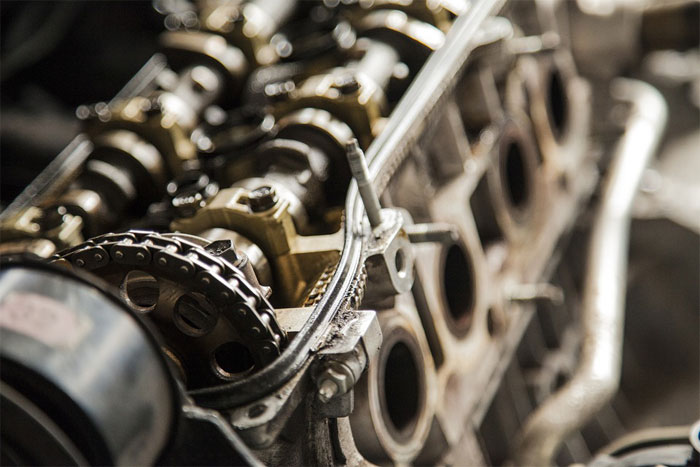How to Remove Engine Sludge?
by Chris Lewis.
Are you worried about developing car troubles? Or are you short on money and can't afford to have your car breakdown?
Suppose you're not looking to chuck out hundreds of dollars at the workshop. In that case, regular maintenance should be your top priority. As the saying goes, precaution is always better than cure!
One of the most crucial aspects of maintaining a car or any fuel-based vehicle is regular engine-oil changes.
However, whenever changing oil, people seem to look over cleaning out engine sludge. In this article, we won't only focus on how to remove engine sludge; we will take a deeper tour of understanding why it is essential.
Contents
What Is Engine Sludge?

A thin layer of this gunk may not be troublesome; however, every layer will, over time, invite more layers to be formed.
As the layers thicken up, this gunk can clog up the engine's internals, cutting off or limiting the flow of engine oil. Thus, leading to a list of engine problems that are likely to empty your pockets.
How Does the Engine Sludge form?
Engine Sludge can form due to many reasons, but the main reason comes from the engine oil itself. Using poor quality oil or putting the wrong additives into your car's engine bay is the most common way to create this problem.
You can also create a layer of sludge inside your engine bay with your driving style and your maintenance schedules. Cars used less often, mainly for short trips, usually end up developing these problems quite quickly.
These problems also occur if you delay oil changes; the longer engine oil is used, the more likely it'll create future problems.
How to Detect Engine Sludge?

Before you go down into using tricks and tips from the internet to rid your car of engine sludge, it's necessary to identify if you have any present.
We recommend not to administer additives into your car's engine bay unless seen fit. Not all additives only do good; some may negatively impact your car too.
To figure out if your car's engine bay contains sludge, follow the following steps:
Step 1: Checking the Dashboard
The easiest way to detect if your engine has trouble pumping lubricant through it is to check the dashboard.
Startup the car and look for either the check engine light or the oil change notification. Both these are indicators that show your car engine requires tending to.
Step 2: Visually Inspecting the Engine
Another method through which you can get an idea about your engine would be by having a quick look at it now and then. We highly recommend popping the hood once in a while to check if any abnormalities are present or not.
Even if you're not a mechanic or have no experience dealing with cars, some abnormalities are very easy to spot.
Have a preliminary check of the engine, look for patches of thick dark oil on its exterior.
Suppose you find any oil gathered in clumps on the engine's exterior or leaking down onto the driveway. In that case, there is a highly likely chance you have engine sludge issues.
Step 3: Investigating the Oil Pan
To confirm if your engine's internals is layered with sludge or not, you'll have to empty the engine oil. Even the slow emptying out engine oil from your car can indicate engine sludge being present.
Once you have the engine oil emptied out, get underneath your car and have a look inside the oil pan. To do this, you will require a flashlight, so have that on hand.
Use the flashlight and point it inside the pan; if the engine oil is okay, the pan's walls should glare off a metallic shine; even though they're covered in oil.
However, if sludge is present, there will be patches on the pan's wall that do not shine out. These indications will confirm that your engine suffers from engine sludge issues.
Step 4: Filtering the Engine Oil
To understand the extent to which these issues are present in the car, sieve the waste oil through a dirty rag, and filter it out.
Even the tiniest bit of grime that remains unfiltered is a bad indicator, showing the engine will require servicing as soon as possible.
How Serious Can Engine Sludge Problems Turn Out to Be?

If you do not perceive engine sludge as a severe issue, you'll be making a ridiculous mistake. Engine sludge usually forms on the inner gears and the oil passages of a motor.
Once layered up with sludge, the gears will find it very difficult to move, considering the immense amount of force that is required.
Additionally, the engine won't be receiving any fresh oil due to the clogged inlets, causing the engine to overheat.
These could extensively incur permanent damage to the internals of the engine. Such damages could rack up service costs in the thousands, and in extreme cases, may even kill your engine completely.
Removing Engine Sludge
Suppose the engine is still performing its tasks smoothly without any hiccups; however, you've detected the presence of sludge. In that case, the engine sludge may not be in a very critical state.
At this stage, treating the engine with some very basic additives should be enough to clear out the engine sludge; you won't require professional help.
The things you'll be needing to carry out this cleaning procedure are:
- Engine flush
- Motor oil
- Motor oil catcher
- Oil filter
- Oil filter wrench
- Basic engine oil replacement tools
- Optional pressurized air
Procedure for removing Engine Sludge:
1. Adding the Engine Flush Fluid
To start the sludge removal procedure, all you have to do is remove the engine oil cap and pour in the engine flush fluid into the engine bay.
2. Putting the Engine to Idle
Once the fluid is poured in, reseal the oil cap and startup the engine. Let the engine idle for 10-15 minutes; this should allow the fluid to mix in with the engine oil.
Once it starts mixing, the fluid will act as a catalyst, breaking down all sludge particles inside the motor.
3. Finishing Up with Compressed Air
After running for some time and thoroughly warming up, the fluid should have done its job; now it is time to remove it.
Like you would when replacing your engine oil, set down an oil catcher underneath the engine and open up the drain plug, letting the old oil to drain out.
The drained oil should contain all the dirty oil and the broken down sludge particles.
However, if you need to be through, run pressurized air through the engine. You can do this by opening up the oil cap and inserting an air pressure gun into it.
Once the compressed air blows into the engine, it should break down any leftover sludge and force it out.
Once the engine is completely drained, replace the oil filter and the drain cap from underneath the vehicle. After the fitting is made, top the engine off with good quality engine oil recommended by the manufacturer.
Ensure that the oil is only filled up to the required levels, and the engine cap is replaced tightly, ensuring hassle-free running.
Conclusion for Engine Sludge Buyers

Maintaining any vehicle can be very time occupying and may take out a little money from your pocket. However, it is a much more practical option than having to pay out hundreds on repairs.
Now that you know how to remove engine sludge, you can do it at home and ensure a well-maintained and smooth operating car.
 |
 |
 |
 |

About Chris Lewis.
Chris Lewis is a passionate individual with a deep affinity for the world of automobiles. From a tender age, his fascination with cars was nurtured by his father, a seasoned mechanic based in the vibrant city of San Francisco. Growing up under the watchful guidance of his skilled father, Chris developed an early aptitude for all things automotive.
Thoughts on "How to Remove Engine Sludge?"
 |
 |
 |
 |
Get FREE Filters now. Or latest free tools from our best collections.
Disable Ad block to get all the secrets. Once done, hit any button below
 |
 |
 |
 |